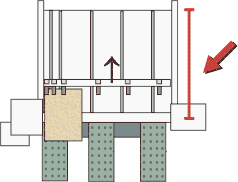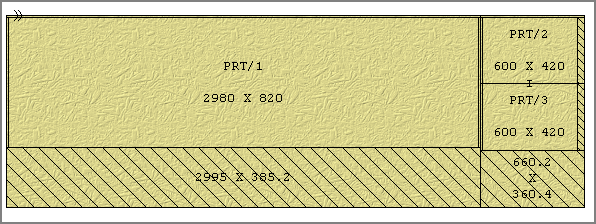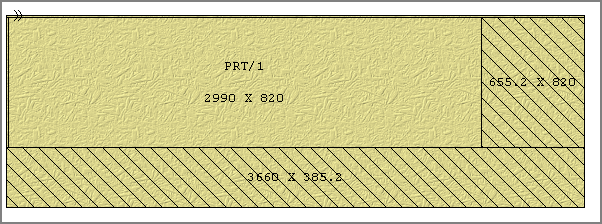

Saw parameter to specify the depth of the saw

The depth of the saw bed is used to determine whether some head cuts can be taken and how certain patterns are cut.
- Enter the depth of the saw bed as a measurement (e.g. 5600mm)
Where the length of a part (or board) to be drawn back plus required trims is greater than the 'Depth of bed for drawback' the piece cannot be drawn back far enough to take the cut.
Examples
In the following examples the 'Depth of bed for drawback' is set at: 3000mm.
The following pattern can be cut as a part length of 2980 + left trim (10mm) + retrim after head cut (5mm) can be fully drawn back within 3000mm.

Where the part length of the large part (above) is increased to 2990mm the above pattern cannot be cut because the extra drawback for the trim and head cut is more than 3000mm (2990 + retrim after head 5mm + left trim 10mm) - so the head cut cannot be taken.

Also if the dimension of any part plus a saw blade thickness is greater than the 'Depth of bed for drawback' it cannot be cut. If the large part (shown above) is increased in length to 2998mm it cannot be optimised (when the Depth of bed for drawback is only 3000mm)
Notes
- The depth of bed for drawback is usually equal to or longer than the overall cutting length.
- If this value is set to less than the overall cutting length the program uses the overall cutting length as the depth of the saw bed.
- How head cuts are taken also depends on the saw type. The above example is for a single saw (type 21).
|
|